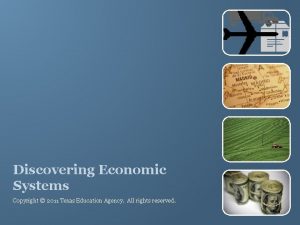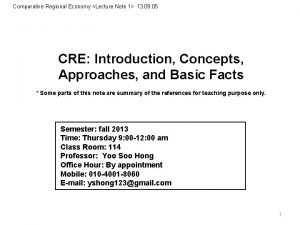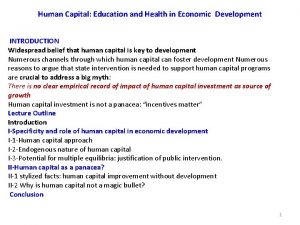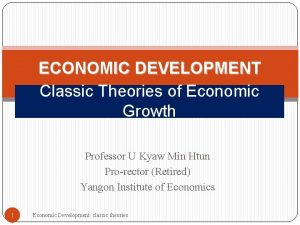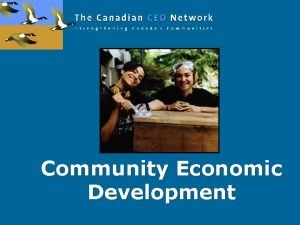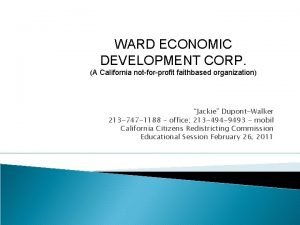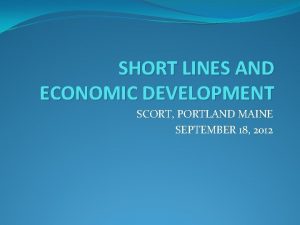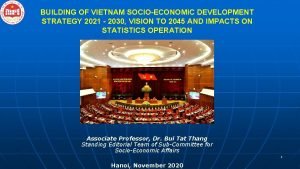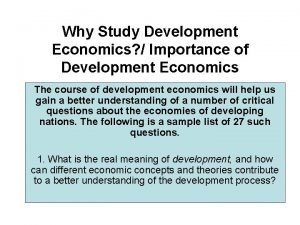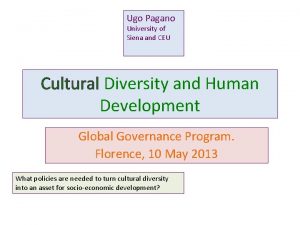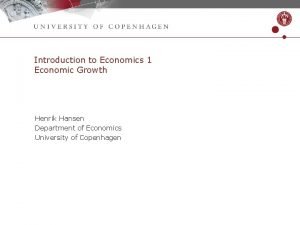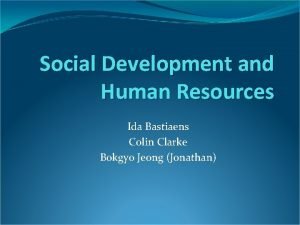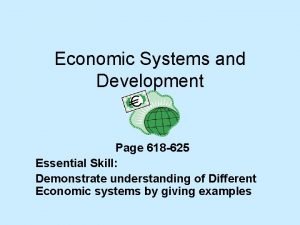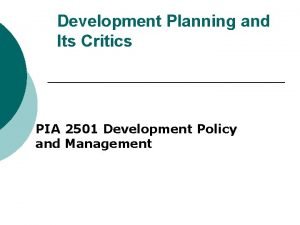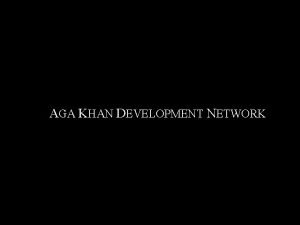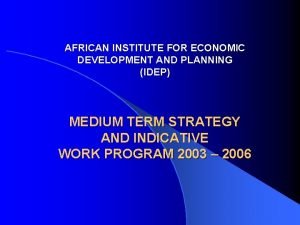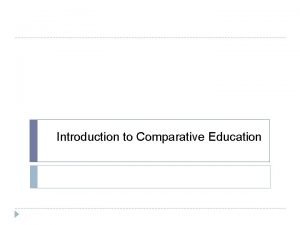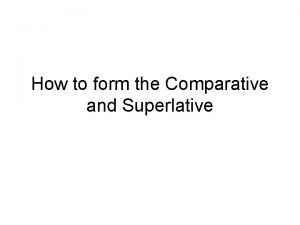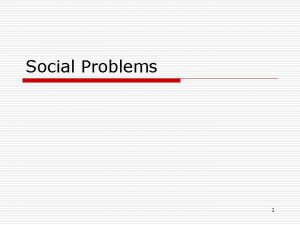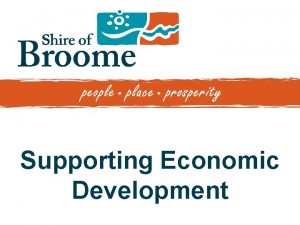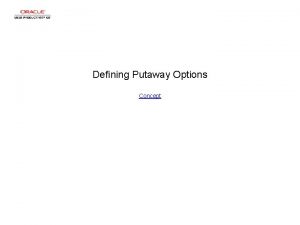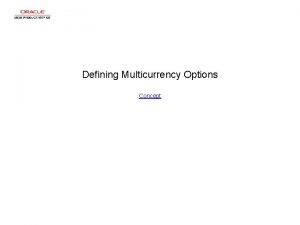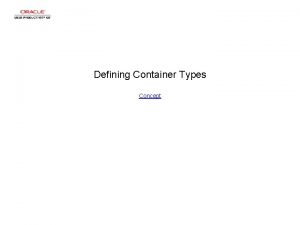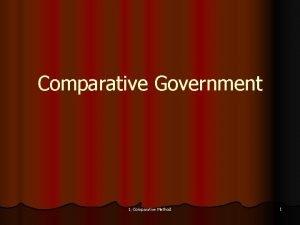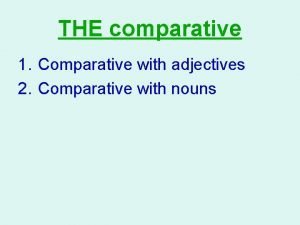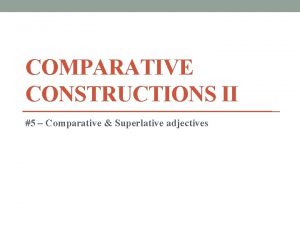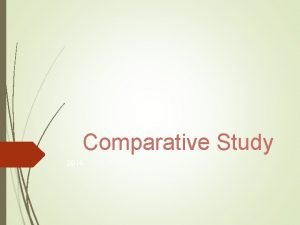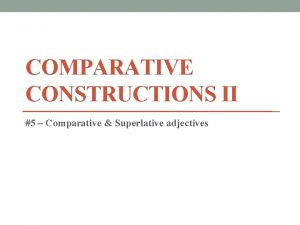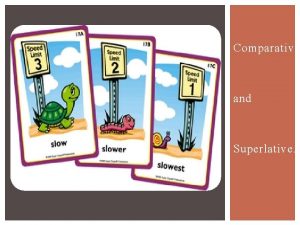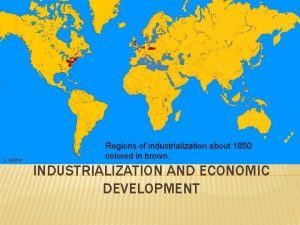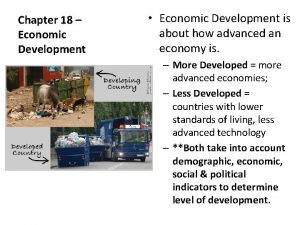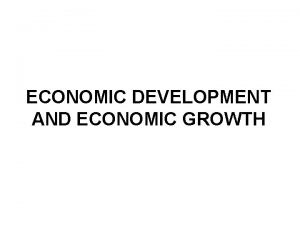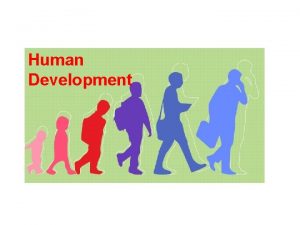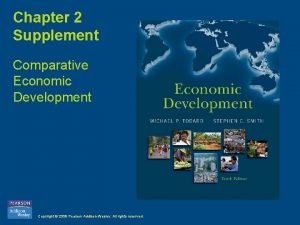Chapter 2 Comparative Economic Development 2 1 Defining















































- Slides: 47

Chapter 2 Comparative Economic Development

2. 1 Defining the Developing World • World Bank Scheme- ranks countries on GNP/capita – LIC, LMC, UMC, OECD (see Table 2. 1 and Figure 2. 1) Copyright © 2015 Pearson Education, Inc. All rights reserved. 2 -2

Table 2. 1 Classification of Economies by Region and Income, 2013 Copyright © 2015 Pearson Education, Inc. All rights reserved. 2 -3

Table 2. 1 Classification of Economies by Region and Income, 2013 (continued) Copyright © 2015 Pearson Education, Inc. All rights reserved. 2 -4

Table 2. 1 Classification of Economies by Region and Income, 2013 (continued) Copyright © 2015 Pearson Education, Inc. All rights reserved. 2 -5

2. 2 Basic Indicators of Development: Real Income, Health, and Education • Gross National Income (GNI) • Gross Domestic Product (GDP) • PPP method instead of exchange rates as conversion factors (see Figure 2. 2) Copyright © 2015 Pearson Education, Inc. All rights reserved. 2 -6

Figure 2. 1 Nations of the World, Classified by GNI Per Capita Source: Data from Atlas of Global Development, 4 th ed. , pp. 16 -17: World Bank and Collins. 2013. ATLAS OF GLOBAL DEVELOPMENT: A VISUAL GUIDE TO THE WORLD’S GREATEST CHALLENGES, FOURTH EDITION. Washington, DC and Glasgow: World Bank and Collins. doi: 10. 1596/978 -0 -8213 -9757 -2. License: Creative Commons Attribution CC BY 3. 0 Copyright © 2015 Pearson Education, Inc. All rights reserved. 2 -7

Figure 2. 2 Income Per Capita in Selected Countries, 2011 Copyright © 2015 Pearson Education, Inc. All rights reserved. 2 -8

Table 2. 2 A Comparison of Per Capita GNI in Selected Developing Countries, the United Kingdom, and the United States, Using Official Exchange-Rate and Purchasing Power Parity Conversions, 2011 Copyright © 2015 Pearson Education, Inc. All rights reserved. 2 -9

Table 2. 3 Commonality and Diversity: Some Basic Indicators Copyright © 2015 Pearson Education, Inc. All rights reserved. 2 -10

2. 3 Holistic Measures of Living Levels and Capabilities • • • Health Life Expectancy Education HDI as a holistic measure of living levels • HDI can be calculated for groups and regions in a country – HDI varies among groups within countries – HDI varies across regions in a country – HDI varies between rural and urban areas Copyright © 2015 Pearson Education, Inc. All rights reserved. 2 -11

2. 3 Holistic Measures of Living Levels and Capabilities • The New Human Development Index • Introduced by UNDP in November 2010 Copyright © 2015 Pearson Education, Inc. All rights reserved. 2 -12

Box 2. 1 Computing the New HDI: Ghana Copyright © 2015 Pearson Education, Inc. All rights reserved. 2 -13

What is new in the New HDI? 1. Calculating with a geometric mean • How does the New HDI compare with the better-known (but no longer active) Traditional HDI? • Probably most consequential: The index is now computed with a geometric mean, instead of an arithmetic mean • A geometric mean is also used to build up the overall education index from its two components • Traditional HDI added the three components and divided by 3 • New HDI takes the cube root of the product of the three component indexes • The traditional HDI calculation assumed one component traded off against another as perfect substitutes, a strong assumption • The reformulation now allows for imperfect substitutability which development specialists widely consider a more plausible way to frame the tradeoffs. Copyright © 2015 Pearson Education, Inc. All rights reserved. 2 -14

What is new in the New HDI? 2. Other key changes: • Gross national income per capita replaces gross domestic product per capita • Revised education components: now using the average actual educational attainment of the whole population, and the expected attainment of today’s children • The maximum values in each dimension have been increased to the observed maximum rather than given a predefined cutoff • The lower goalpost for income has been reduced due to new evidence on lower possible income levels Copyright © 2015 Pearson Education, Inc. All rights reserved. 2 -15

Table 2. 4 2013 New Human Development Index and its Components for Selected Countries Copyright © 2015 Pearson Education, Inc. All rights reserved. 2 -16

2. 4 Characteristics of the Developing World: Diversity within Commonality • These eight characteristics are common among developing countries – on average and with great diversity - in comparison with developed countries: 1. Lower levels of living and productivity 2. Lower levels of human capital (health, education, skills) 3. Higher Levels of Inequality and Absolute Poverty – World Poverty 4. Higher Population Growth Rates – Crude Birth rates Copyright © 2015 Pearson Education, Inc. All rights reserved. 2 -17

2. 4 Characteristics of the Developing World: Diversity within Commonality 5. Greater Social Fractionalization 6. Larger Rural Populations but Rapid Rural-to-Urban Migration 7. Lower Levels of Industrialization and Manufactured Exports 8. Adverse Geography – Resource endowments Copyright © 2015 Pearson Education, Inc. All rights reserved. 2 -18

2. 4 Characteristics of the Developing World: Diversity within Commonality 9. Underdeveloped Financial and Other markets – Imperfect markets – Incomplete information 10. Colonial Legacy and External Dependence – – Institutions Private property Personal taxation Taxes in cash rather than in kind Copyright © 2015 Pearson Education, Inc. All rights reserved. 2 -19

Figure 2. 3 a Shares of Global Income, 2008. (b) Developing regions lag far behind the developed world in productivity measured as output per worker. Source: Figure 2. 3 a, Data from World Bank, World Development Indicators 2013 (Washington, D. C. : World Bank, 2013), p. 24. Copyright © 2015 Pearson Education, Inc. All rights reserved. 2 -20

Figure 2. 3 b Developing regions lag far behind the developed world in productivity measured as output per worker. Source: Figure 2. 3 b, United Nations, Millenium Development Goals Report 2012, p. 9. Copyright © 2015 Pearson Education, Inc. All rights reserved. 2 -21

Table 2. 5 The 12 Most and Least Populated Countries and Their Per Capita Income, 2008 Copyright © 2015 Pearson Education, Inc. All rights reserved. 2 -22

Figure 2. 4 Under-5 Mortality Rates, 1990 and 2012 Copyright © 2015 Pearson Education, Inc. All rights reserved. 2 -23

Table 2. 6 Primary School Enrollment and Pupil-Teacher Ratios, 2010 Copyright © 2015 Pearson Education, Inc. All rights reserved. 2 -24

Figure 2. 5 Correlation between Under-5 Mortality and Mother’s Education Copyright © 2015 Pearson Education, Inc. All rights reserved. 2 -25

Figure 2. 6 Number of People Living in Poverty by Region, 1981– 2008 Copyright © 2015 Pearson Education, Inc. All rights reserved. 2 -26

Table 2. 7 Crude Birth Rates Around the World, 2012 Copyright © 2015 Pearson Education, Inc. All rights reserved. 2 -27

Table 2. 8 The Urban Population in Developed Countries and Developing Regions Copyright © 2015 Pearson Education, Inc. All rights reserved. 2 -28

Table 2. 9 Share of the Population Employed in the Agricultural, Industrial, and Service Sectors in Selected Countries, 2004– 2008 (%) Copyright © 2015 Pearson Education, Inc. All rights reserved. 2 -29

Table 2. 10 Share of the Population Employed in the Agricultural, Industrial, and Service Sectors in Selected Countries, 1990– 92 and 2008– 2011 (%) Copyright © 2015 Pearson Education, Inc. All rights reserved. 2 -30

2. 5 How Low-Income Countries Today Differ from Developed Countries in Their Earlier Stages • Eight differences – Physical and human resource endowments – Per capita incomes and levels of GDP in relation to the rest of the world – Climate – Population size, distribution, and growth – Historic role of international migration – International trade benefits – Basic scientific/technological research and development capabilities – Efficacy of domestic institutions Copyright © 2015 Pearson Education, Inc. All rights reserved. 2 -31

2. 6 Are Living Standards of Developing and Devolved Nations Converging? • Evidence of unconditional convergence is hard to find • But there is increasing evidence of “per capita income convergence, ” weighting changes in per capita income by population size • (Also, in chapter 3, we return to examine the concept of conditional convergence when we study the Solow model) Copyright © 2015 Pearson Education, Inc. All rights reserved. 2 -32

Figure 2. 7 Relative Country Convergence: World, Developing Countries, and OECD (continued) Copyright © 2015 Pearson Education, Inc. All rights reserved. 2 -33

Figure 2. 7 Relative Country Convergence: World, Developing Countries, and OECD Copyright © 2015 Pearson Education, Inc. All rights reserved. 2 -34

Figure 2. 8 Growth Convergence versus Absolute Income Convergence Copyright © 2015 Pearson Education, Inc. All rights reserved. 2 -35

Figure 2. 9 Country Size, Initial Income Level, and Economic Growth Copyright © 2015 Pearson Education, Inc. All rights reserved. 2 -36

2. 7 Long-Run Causes of Comparative Development • Schematic Representation – Geography – Institutional quality- colonial and post-colonial – Colonial legacy- pre colonial comparative advantage – Evolution and timing of European development – Inequality- human capital – Type of colonial regime Copyright © 2015 Pearson Education, Inc. All rights reserved. 2 -37

Nature and Role of Economic Institutions • • • Institutions provide “rules of the game” of economic life Provide underpinning of a market economy Include property rights; contract enforcement Can work for improving coordination, Restricting coercive, fraudulent and anti-competitive behavior Providing access to opportunities for the broad population. Constraining the power of elites, and managing conflict Provision of social insurance Provision of predictable macroeconomic stability Note: These institutions are correlated and it is not clear which of these institutions matter most; and “transitional institutions” may help in the development process Copyright © 2015 Pearson Education, Inc. All rights reserved. 2 -38

Role of Institutions • Acemoglu, Johnson, and Robinson’s “reversal of fortune” and extractive institutions • Bannerjee and Iyer, “property rights institutions. ” Landlords versus cultivators Copyright © 2015 Pearson Education, Inc. All rights reserved. 2 -39

Figure 2. 10 Schematic Representation of Leading Theories of Comparative Development Copyright © 2015 Pearson Education, Inc. All rights reserved. 2 -40

Concepts for Review • • Absolute poverty Brain drain Capital stock Convergence Crude birth rate Dependency burden Depreciation (of the capital stock) • Diminishing Marginal Utility • Divergence Copyright © 2015 Pearson Education, Inc. All rights reserved. • • Economic Institutions Fractionalization Free trade Gross domestic product (GDP) • Gross national income (GNI) • Human capital • Human Development Index (HDI) 2 -41

Concepts for Review (cont’d) • • • Imperfect market Incomplete information Infrastructure Least developed countries Low-income countries (LICs) • Middle-income countries • Newly industrializing countries (NICs) Copyright © 2015 Pearson Education, Inc. All rights reserved. • Purchasing power parity (PPP) • Research and development (R&D) • Resource endowment • Terms of trade • Value added • World Bank 2 -42

Appendix 2. 1 The Traditional Human Development Index (HDI) • Equation A 2. 6: Copyright © 2015 Pearson Education, Inc. All rights reserved. 2 -43

Table A 2. 1. 1 2009 Traditional Human Development Index for 24 Selected Countries (2007 Data) Copyright © 2015 Pearson Education, Inc. All rights reserved. 2 -44

Table A 2. 1. 2 2009 Human Development Index Variations for Similar Incomes (2007 Data) Copyright © 2015 Pearson Education, Inc. All rights reserved. 2 -45

Figure A 2. 1. 1 Human Development Disparities within Selected Countries Copyright © 2015 Pearson Education, Inc. All rights reserved. 2 -46

Figure A 2. 1. 1 Human Development Disparities within Selected Countries (continued) Copyright © 2015 Pearson Education, Inc. All rights reserved. 2 -47
 Defining non defining relative clauses
Defining non defining relative clauses Relative clauses defining and non defining
Relative clauses defining and non defining Relative clauses defining and non defining
Relative clauses defining and non defining Defining relative clause meaning in telugu
Defining relative clause meaning in telugu Defining vs non defining relative clauses
Defining vs non defining relative clauses Defining and non-defining relative clause
Defining and non-defining relative clause Economic growth vs economic development
Economic growth vs economic development Economic development vs economic growth
Economic development vs economic growth Lesson 2 our economic choices
Lesson 2 our economic choices Discovering economic systems comparative worksheet answers
Discovering economic systems comparative worksheet answers Economical comparative and superlative
Economical comparative and superlative Wake county economic development
Wake county economic development Economic social development
Economic social development Northern waterfront economic development initiative
Northern waterfront economic development initiative Human capital education and health in economic development
Human capital education and health in economic development Economic social development
Economic social development Dualistic development thesis
Dualistic development thesis Positive effects of primate cities
Positive effects of primate cities Canadian community economic development network
Canadian community economic development network Ward economic development corporation
Ward economic development corporation Scort portland
Scort portland Platte county economic development
Platte county economic development Economic development advisor
Economic development advisor Vietnam socio-economic development strategy for 2021-30
Vietnam socio-economic development strategy for 2021-30 Importance of development economics
Importance of development economics Obstacles to economic development
Obstacles to economic development Georgia academy for economic development
Georgia academy for economic development Economic growth and development
Economic growth and development California association for local economic development
California association for local economic development Ida bastiaens
Ida bastiaens Defination of economic development
Defination of economic development Role of government in economic development
Role of government in economic development Oxhmoron
Oxhmoron Opportunities for economic development in the sahara desert
Opportunities for economic development in the sahara desert Marine stewardship council
Marine stewardship council Coop swot
Coop swot Swodf
Swodf Downers grove economic development
Downers grove economic development Aga khan fund for economic development sa
Aga khan fund for economic development sa African institute for economic development and planning
African institute for economic development and planning Definition of education by different authors
Definition of education by different authors Superlative the tall
Superlative the tall Causal-comparative
Causal-comparative Comparative development experiences of india and china
Comparative development experiences of india and china Definition of smartness
Definition of smartness The defining moment in greek history is the wars
The defining moment in greek history is the wars What are the features of chordates
What are the features of chordates Need and importance of textbook
Need and importance of textbook









